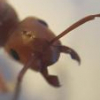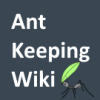I'll start by saying that while I've had a keen interest in ants and their husbandry for a couple years now, I've only recently been able to collect and begin caring for my own queens. Inside the last two weeks, as a matter of fact. (Huge thanks to Irishmate03112002, Canadian anter, YsTheAnt, and Batspiderfish for their help and knowledge in identification!)
Of the few that I've caught this season, two of the dealates appear to be S. xyloni, and for me this presents a problem. I have no experience in the actual keeping of ants, and the prospect of having an aggressive species, both in temperment and growth, is frankly daunting. I'm not sure if that's something that I'm prepared to deal with. On the other hand, I'm elated to even have the chance at all.
My question then is this: Is it advisable for an amateur to keep a species such as S. xyloni and S. invicta, or would it be a better idea to euthanize them before they even approach an unmanageable situation? I'd also like to include in this species that can be particular about their formicaria such as A. texana and other leaf-cutters, as well as any others that can present a real challenge in one way or another.
I realize that the answer might come down to a personal assessment of my own capabilities and situation. However, I feel that this question should be addressed to the forum to see the general consensus, specifically for people new to the hobby, and to perhaps list species that are best left to those with several years of successful ant keeping. Not to forbid people from keeping them (unless of course it would break the law), but rather to strongly caution the inexperienced of the possibilities that are most likely to occur.
So, thoughts?




















